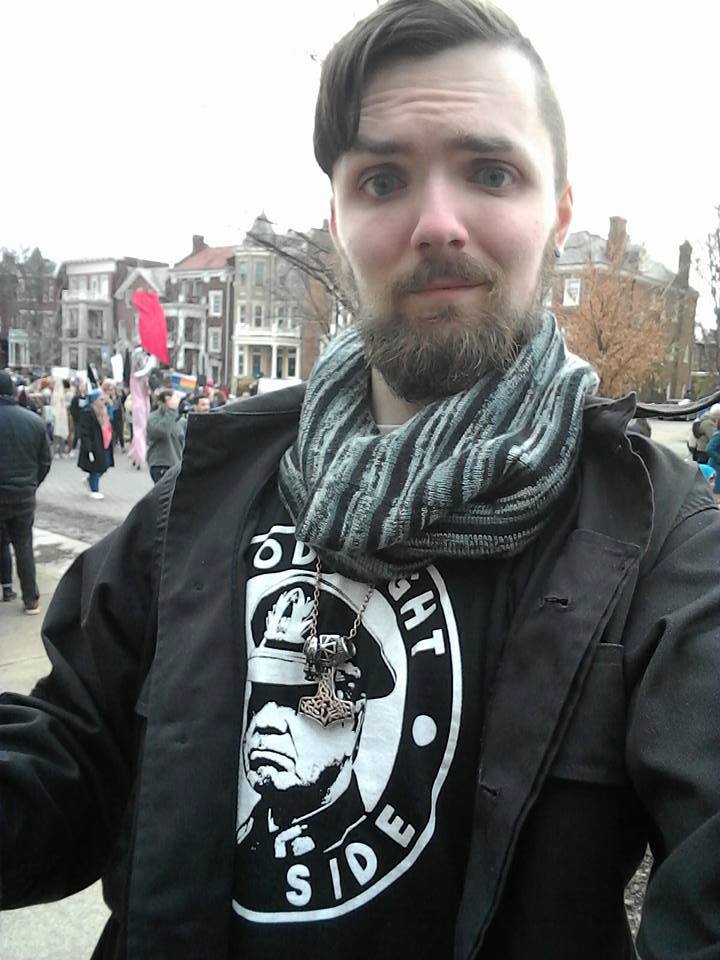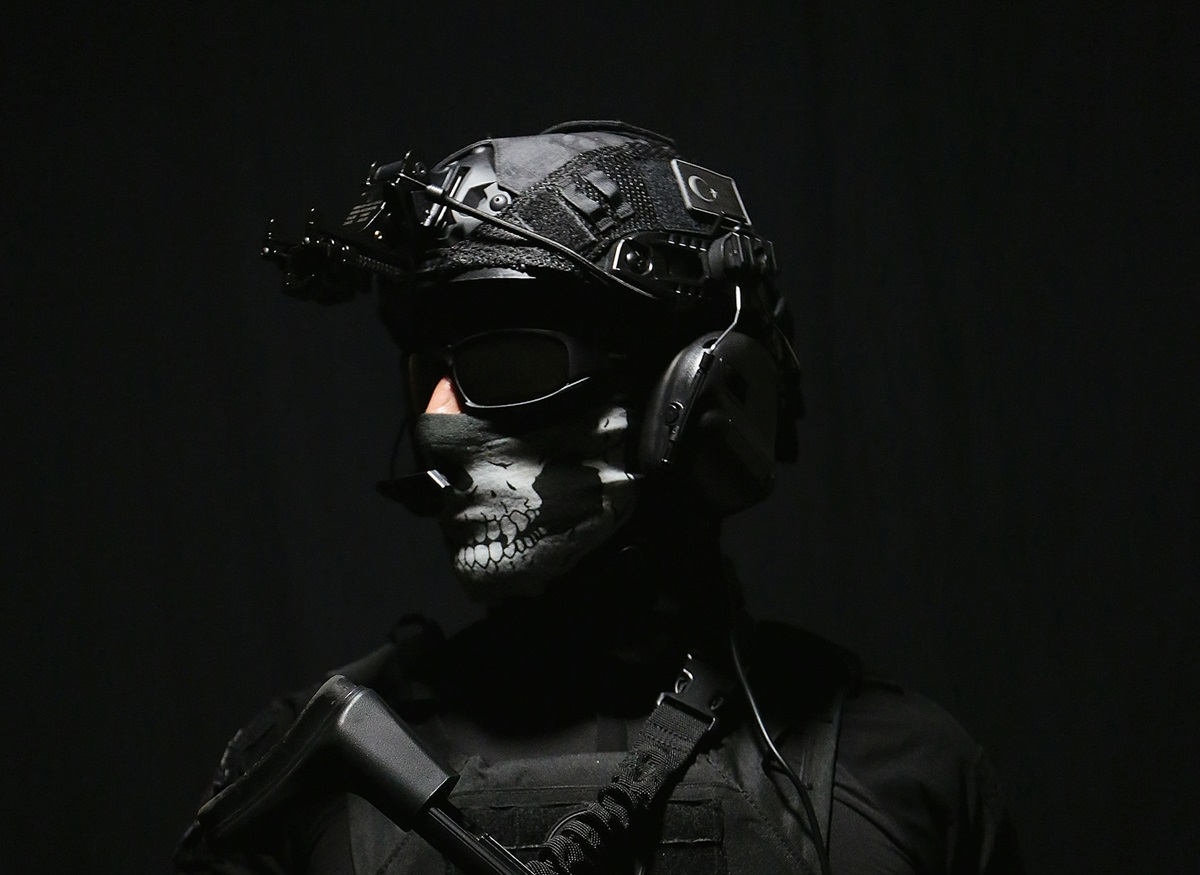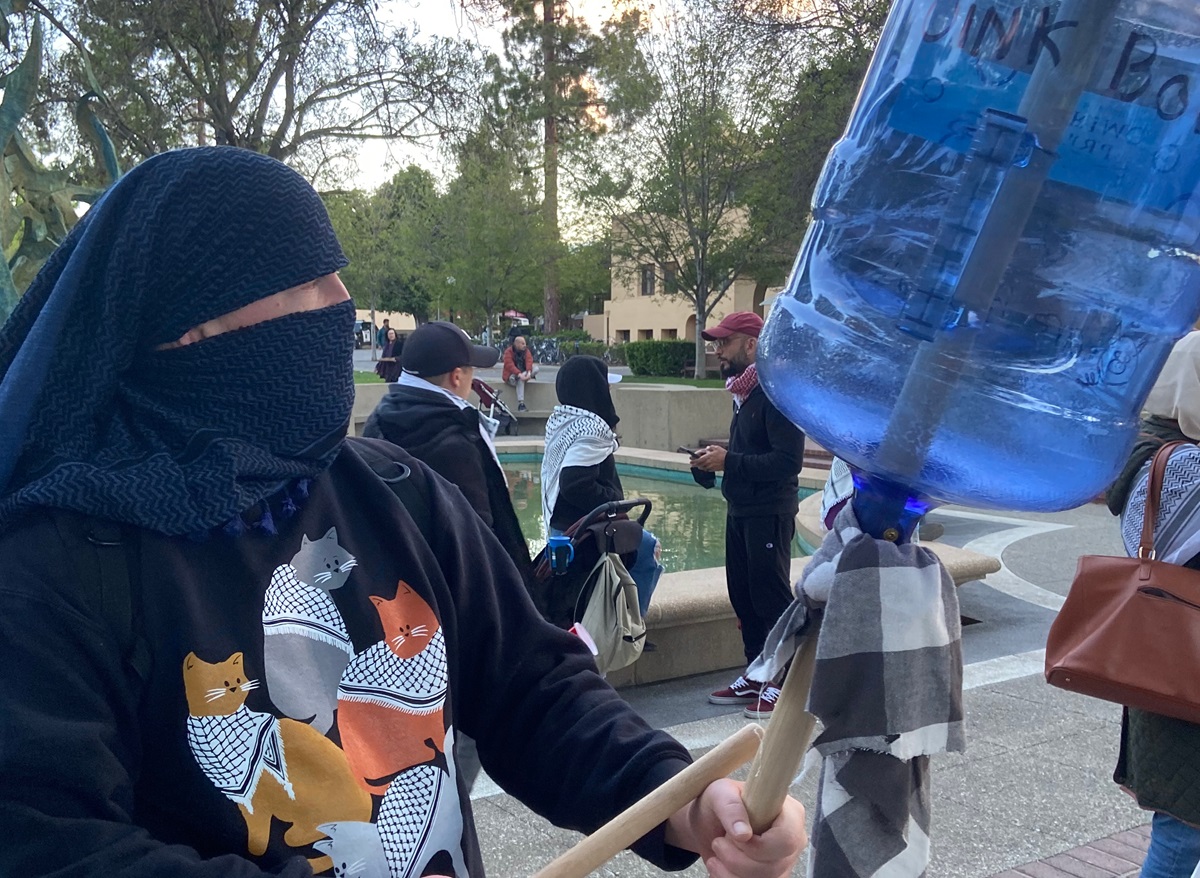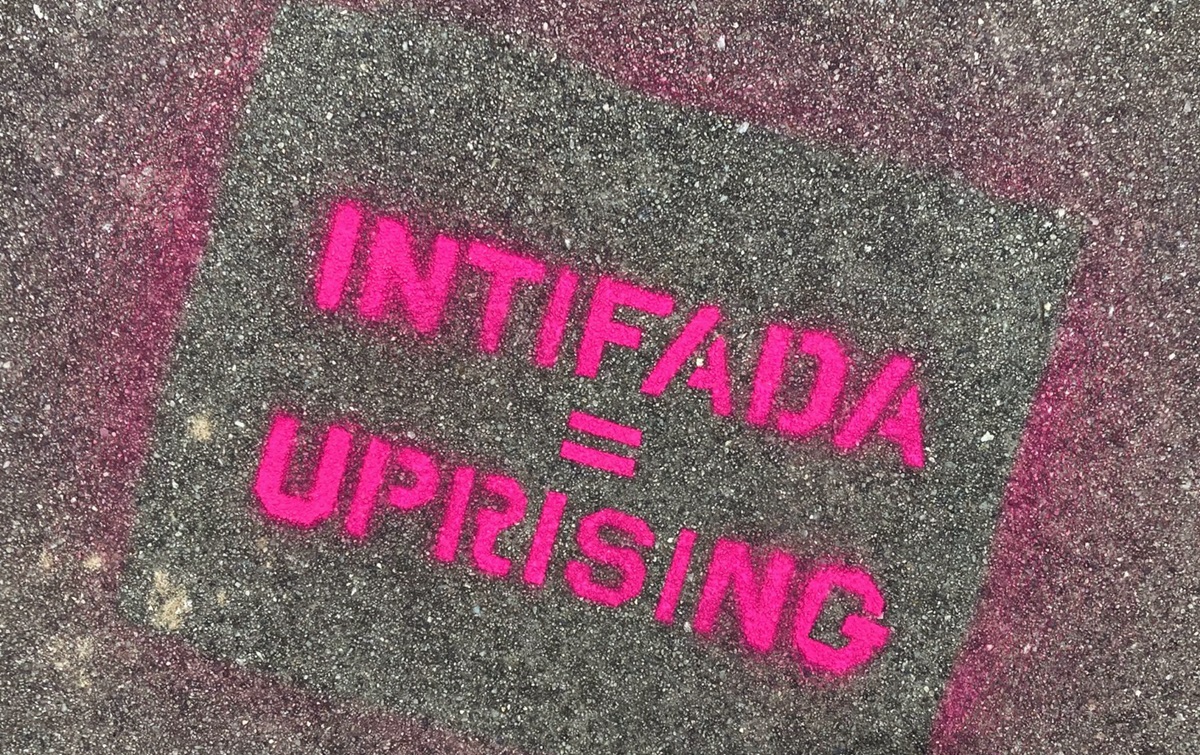Filed under: Action, Anarchist Movement, Southeast
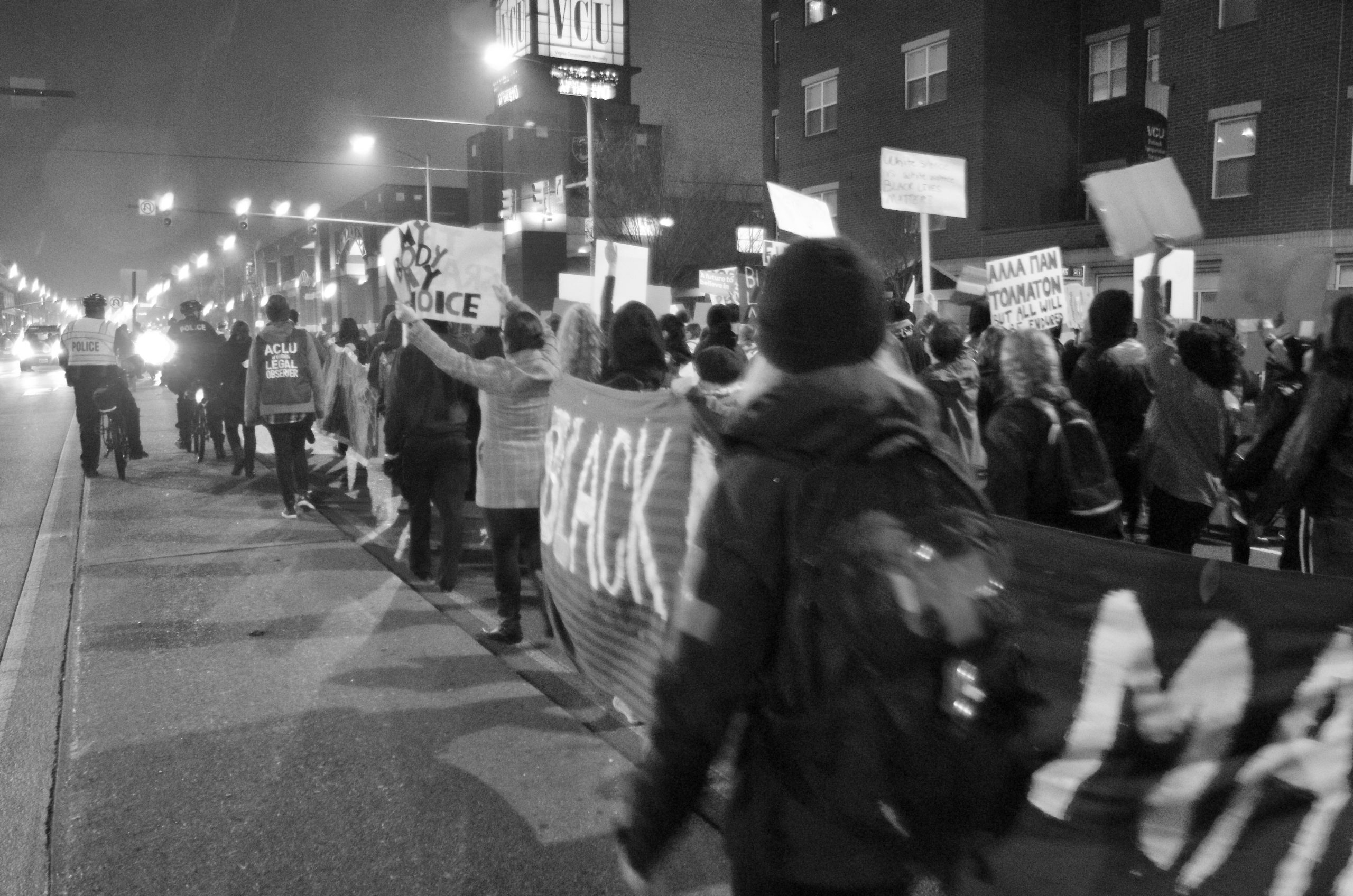
Residents of Richmond, Virginia know our history — we know white supremacy, and oppression, and corrupt plutocracy. Richmond knows we must oppose a peaceful transition of power into the hands of an emboldened, nationalist right-wing party. Richmond knows that refusing Trump’s America means rebelling in the streets and empowering ourselves in direct political actions that challenge the legitimacy of the state and restore autonomy to the city’s residents.
At sundown on Inauguration Day, Richmonders met at Abner Clay Park in the Jackson Ward neighborhood to publicly protest the inauguration of Donald Trump, and stand in solidarity opposed to xenophobia, white supremacy, nationalism, queer oppression and misogyny.
Members of the Richmond community are facing the question of how we ought to be governed (or not governed at all). Living in the former capital of the confederacy and the birthplace of Steve Bannon, how can we support one another in light of the ever-growing violence from the white supremacist state against Muslim, Black, and Latinx peoples everywhere?
Support comes in the form of mutual efforts for learning, feeding and growing. Earlier on that day, a teach-in was hosted at local non-profit art and music venue Gallery 5. With an intent to directs eyes and attention away from the inauguration ceremony, the teach-in focused on the fact-based learning that will be critical to survival and growth in the coming years. Topics include the science of climate change; knowing your rights as a protester; the history of civil rights movement in VA; art and dissent; and a brief direct action training. A free meal was served to participants, donated by the local Food Not Bombs organization.
During the march, volunteers provided free childcare in a space donated by another local art organization in the Jackson Ward neighborhood, and easily accessible from the park. Medics, bike marshals, and legal observers volunteered to provide support and safety for protesters. ACLU reps observed the entirety of the evening, providing legal resources and assure a healthy relationship between the police and the community.
A designated police liaison represented protestors, with the purpose of having one line of communication with the police to prevent misrepresentation, self-incrimination, and “peace police” that work to mirror repressive tactics waged by the state and the police. Similarly, a media liaison communicated with news crews, monitored their behavior, and encouraged protesters to only provide interviews if they felt comfortable.
This structure of established roles held individuals accountable to securing safety and efficiency required for direct actions. Having clear roles also ensured we were prepared for expected and unexpected challenges confronted throughout the demonstration.
Police had been surveilling the park and nearby neighborhood the entire day, even preparing and planning on a building lot near the park perimeter. Early in the day, three to four policeman on horses stood guard under the gazebo in the park— citing rain as the reason for their presence. Marked and unmarked police cars remained parked at the corners of Broad Street and Belvidere Ave the entire day. It became apparent that police were expecting protesters to storm the freeway, as Richmond has done in the past. Around 4pm, thirteen state troopers could be counted on the overpass of I-95 — the precise spot where, two months ago, protestors took the highway in an impromptu rejection of the election results.
That night, carrying signs, banners, backpacks full of water, we remained largely silent as we were joined by our comrades. Bright lights from local news cameras flooded the park plaza, illuminating the growing crowd of about 85 people. The crowd skewed young and white, but across the mix of ages, races and ethnicities, most everyone wore black. Three or four pink pussy hats popped out in the crowd. About 15-20 bike marshals gathered along the outskirts.
A single asshole with a smartphone held arm’s length in front of him weaved through, denouncing the crowd “sore losers.” Within moments, his monologues escalated to incoherence—yelling into the local news cameras and screaming threats at the crowd — and folks responded in kind. Our first agitator ran off quickly, disappearing behind the crowd of neon-yellow-clad bike cops.
The crowd’s excitement at this preliminary antagonism was quickly redirected to the sole rally speaker. He spoke of the “constellation of oppression” that “grows brighter around us,” but reassured the protestors that “we will win in the end.”
By the time we were ready to march, a police presence nearly equaling the presence of protesters has surrounded the group. Banners reading “Refugees Welcome,” “Black Lives Matter,” “Queers Bash Back” and “Resistance Begins Here” formed walls around the black mass that swarmed into the street.
We turned right down Broad Street, pausing in the intersection that had been policed so much earlier that day. The crowd grew in numbers as passerby joined in. Onlookers cheered from the dormitory and apartment building windows which line the march’s route, and an organizer with a megaphone directed the crowd’s attention to them: ”Don’t tweet about it, be about it!” Protestors received positive attention from drivers on Broad Street who, unbothered by the traffic disruption, honked their enthusiastic support instead. “NO TRUMP, NO KKK, NO FASCIST U.S.A.” rippled through the city.
Derrick Davis, local neo-Nazi organizer for the Traditionalist Worker Party, was identified on the edge of the moving mass, blending in with the police in a blaze green coat and carrying a video camera mounted on a selfie stick aimed at the protestors. Again the megaphone was put to use, as the crowd’s attention was directed at him, “an actual Nazi.” When confronted, Davis grinned and lifted his jacket to flash a holstered gun.
Derrick Davis of Traditionalist Worker Party
The police liaison made both police departments aware of Davis’ presence and threats toward participants of the march. No action was taken. Time and time again, officers were asked to tell Davis to leave— or to allow the police liaison to have a conversation with RPD Chief Alfred Durham — but unsurprisingly, the police never held up their end of the communicative relationship. To us, this experience recalls a recent article: “We cannot rely on the police, and we do not care to…We are not surprised, because the police have always worked with the fascists, in every country where fascism has taken hold.” Individuals kept a close eye on every move Davis made until he unexpectedly left the march.
Protestors took a turn down Lombardy Street toward Virginia Union University. Cries of “WHOSE STREETS? OUR STREETS!” reverberate from an overpass for I-95, the highway which divides the city’s Northside neighborhood. When we reached campus, the crowd was turned around at a roundabout, turning against a sea of police cruisers flashing their lights and blaring the sirens. Undeterred, we continued. On the way back under the bridge, “REFUGEES ARE WELCOME HERE” rang out.
In tight and militant formation, protesters marched back, holding the Broad Street intersections. We continued to Monument Avenue, where monuments to confederate generals honor Richmond’s white supremacist legacy. “DEATH TO CONFEDERATES, TAKE DOWN THE MONUMENTS.” Across the street, state troopers revved their motorcycles.
For almost a mile of Monument Avenue, the crowd shouted “FUCK YOUR HEROES!” and “YOUR VOTE WAS A HATE CRIME” in unison as wealthy homeowners were seen grumbling to themselves from dimly-lit mansion windows. On Robinson Street, lined with restaurants and bars, dozens of service workers left their posts and stood in the streets, cheering on the protestors alongside the less-astonished patrons.
Three protesters took an impromptu lead of the march, supported by organizers, and shouted “THIS IS WHAT DEMOCRACY LOOKS LIKE” at the top of their exhausted lungs. Around two-hundred people in total participated in the action. Behind the crowd of protestors marching through the streets of Richmond followed police on bikes and in cars from the Richmond Police Department and Virginia Commonwealth University Police Department. The police redirected traffic several blocks ahead of the protest for safety measures. With only two hundred protestors on a busy road, we were left susceptible to unsafe conditions even with bike marshals blocking traffic for safe passage.
In the home stretch returning down Broad Street, our spirits remained high. No arrests (yet) and only the mild opposition of a few feisty, drunk right-wing trolls. Our voices were clear: “BLACK LIVES MATTER!” To our right, a GRTC bus pulled over at a scheduled stop, the sole passenger — middle-aged and black, wears a work uniform — held her phone up to film the march. Through the windows, she mouths along with our chant. “Black. Lives. Matter!”
As we returned to the park, the crowd came together to chant, “THE PEOPLE UNITED, WILL NEVER BE DEFEATED.” As we dispersed, smiling with relief, the crowd responded in cheers to an announcement that “tonight is just the beginning.”


